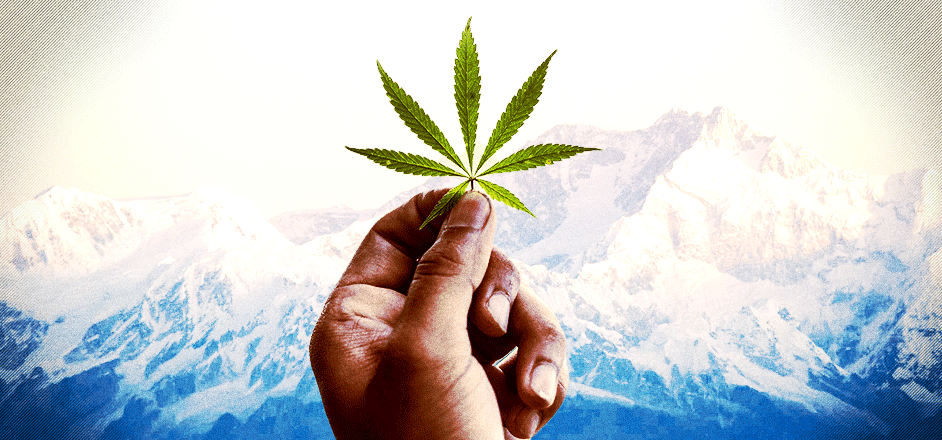If most stoners understood what kind of environmental impacts growing pot has on the environment, they’d probably choke on their roach.
Between the electrical power required to light and ventilate these plants, the volatile organic compounds (VOC’s) associated with growing them and synthesizing concentrates, the material waste produced and the water these thirsty plants suck up, the business of growing pot is undoubtedly one of the biggest environmental issues facing this state or anywhere else it’s been legalized.
Which has forced Colorado to take a good hard look in the mirror. This state is a bastion for environmentalism, and at the same time it's become somewhat famous for its lenient laws on burning bud.
So how can the two ever be reconciled?
That’s the million-dollar question that the Colorado Department of Public Health and Environment (CDPHE) is trying to answer. Kaitlin Urso is with the CDPHE’s small business assistance program, and she offers free consultation to any “small” cannabis business (under 100 employees) in Colorado. Urso acts as an environmental sage for these budding businesses, helping them to understand how they can pursue sustainable growing practices, while at the same time saving dollar bills.
“All of these environmental metrics are tied to profit margins at the end of the day,” Urso explains. Saving water is good for the environment — it’s also good for growers’ bottom lines. Using less fertilizer saves money on buying more fertilizer and it’s healthier for Mother Nature. Reducing the amount of energy used, saves environmental face and saves money on that electrical bill.
So, the goals are aligned. It’s just a matter of getting growers on board and spreading the good word.
But how? If the Yellow Vest movement is any lesson to learn from, simply slapping environmental restrictions onto an industry and/or hiking resource prices, doesn’t really fly all that well with The People. It’s more effective, when it comes to sustainability, to use a carrot instead of a stick.
Which, is exactly what Urso and her colleagues are trying to do. They’re developing an online database that will incentivize sustainable choices, by cataloguing the environmental impact of growers from around the state in a single place. The idea is: if growers can see where they stand among their peers sustainability-wise, they will have competitive incentive to not be wasteful or total environmental slobs.
Plus, this database will give the CDPHE a tool to identify the “best practices” and offer easy guidance for growers looking to up their environmental game. And often, Urso points out, the best practices are pretty breezy.
For example, before getting into the realm of cannabis sustainability, Urso worked on a similar initiative within the brewing industry. They found that many brewers were cleaning up their brew spaces using hoses, which wasted a lot of water unnecessarily. The solution? Urso and her colleagues suggested they clean up with a broom instead of a hose. BOOM! Problem solved.
“Just so simple, no cost, no brainer things,” says Urso. “That's kind of where we're trying to get with this, is sort of showing businesses that these small minor changes do have an impact and you can track that impact and then once you track it, you can associate it with dollars.”
The first step to that, though, is quantifying the growers’ impact. They need to establish a baseline metric, against which growers can measure their progress along the path to sustainability. That way, they will be able to assess how much energy or water or whatever else they’re using/saving, and how much money that’s saving them. They’ll be able to gauge their improvements and compare their environmental metrics against their industry peers (anonymously, it’s important to note).
“We've also got some ideas for how to tie that data into potential awards so people can opt in for industry environmental awards if they've got really good metrics that stand out among their peers,” says Urso.
By creating a kind of competitive environment for improvement and showing these growers how they can save money by operating sustainably, Urso and the CDPHE hope to create an industry that essentially regulates itself.
“The hope is to encourage these simple solutions and the best management practices in the meantime, and then maybe at the end of the day we don't really have an issue to regulate,” says Urso.
It would essentially be a cannabis engine that self-cleans, self-greens and self-optimizes.
That’s the dream, at least. And if Urso can help Colorado realize it, this state will undoubtedly set the precedent for environmentally conscious cannabis cultivation.
Which is something the cannabis industry desperately needs. The vast majority marijuana users, are also environmentally concerned and conscious people — they’re the ones out there demanding an end to the use of plastic straws, calling for compost coalitions and riding their bikes everywhere to reduce their carbon footprint. They are hikers and bikers, fishers, climbers, skiers, bird watchers and bigfoot hunters and they all value Mother Nature in one respect or another.
Making sure that their cannabis doesn’t come at the expense of our environment is in everyone’s best interest.



Leave a Reply
You must be logged in to post a comment.